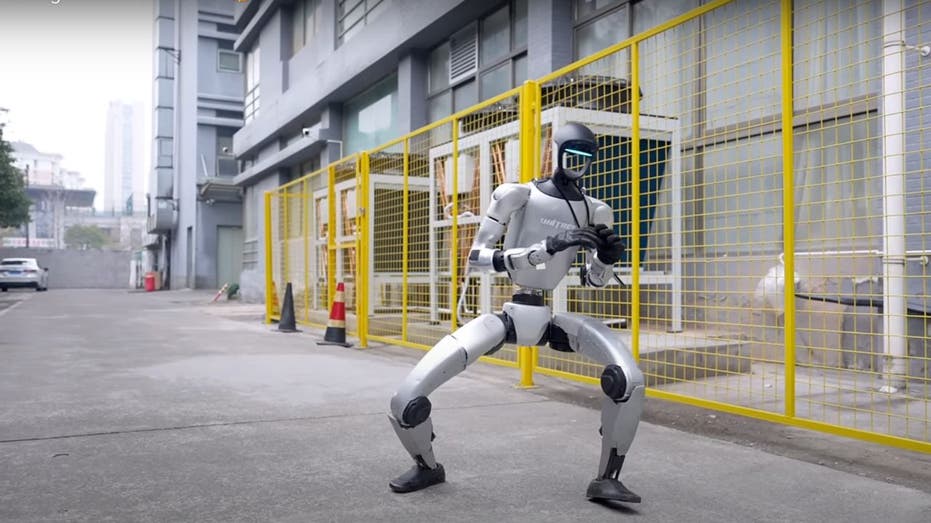Chinese Robot Showcases Jaw-Dropping Kung Fu Skills

In a remarkable showcase of innovation, China’s Unitree Robotics has introduced a groundbreaking humanoid robot capable of executing kung fu moves with exceptional precision and balance. This latest creation, known as the G1, demonstrates the fast-paced advancements in robotics and artificial intelligence.
Transforming from Dance to Martial Arts Mastery
Unitree’s G1 has evolved from a nimble dancer into a martial arts virtuoso, highlighting the impressive progress made in robotic technology. The development of the G1’s abilities is as intriguing as the robot itself, involving sophisticated training methods that push the limits of what robots can achieve.
Innovative Learning in a Virtual Environment
The journey to mastering kung fu begins in a virtual world through Nvidia’s Isaac Simulator. During this phase, the robot learns complex behaviors before it is even built. By creating a digital twin, the G1 observes and mimics human actions using advanced motion capture and video data techniques.
These behaviors are refined through reinforcement learning within the virtual realm. Once the robot has acquired these skills, they are seamlessly transferred to the physical G1 using a method known as Sim2Real, which bridges the gap between simulated actions and real-world applications.
Impressive Demonstration: Kung Fu Like Never Before
In its latest video demonstration, the G1 humanoid robot dazzles viewers with an impressive array of kung fu techniques. It executes punches, roundhouse kicks, and other intricate martial arts maneuvers, showcasing its remarkable coordination and agility. With an impressive 23 degrees of freedom, the G1 exhibits a level of dexterity that would astonish even martial arts legends.
Beyond Martial Arts: The Versatile Role of the G1
While the kung fu demonstration is captivating, Unitree envisions a broader application for its humanoid robots. The G1 is designed to fulfill various roles, handling complex and repetitive tasks in diverse environments such as homes, factories, and hospitals. This aligns with Unitree’s goal of integrating humanoid robots as practical companions in everyday life.
Advancing Natural Movement with Open-Source Datasets
To further enhance the natural movements of its humanoid robots, Unitree has released an open-source full-body dataset. This resource, compatible with the G1, H1, and H1-2 models, allows robots to perform more human-like motions with improved flexibility and coordination. The dataset employs a redirection algorithm that optimizes robot movements, taking into account factors like end posture constraints, joint positions, and velocity limitations.
The Future of Humanoid Robotics: Opportunities and Ethical Considerations
As we witness the G1’s remarkable evolution from a dancing robot to a kung fu master, it’s evident that the field of humanoid robotics is advancing at an unprecedented rate. The combination of cutting-edge hardware, advanced AI algorithms, and innovative training techniques like Sim2Real is expanding the horizons of what these machines can accomplish.
While the display of martial arts skills is impressive, it raises important questions about the future implications of such advanced robotics. As machines become more adept at mimicking human movements and behaviors, we must carefully evaluate the potential benefits and ethical considerations that accompany this technology.
The Relationship Between Humans and Robots: A Future to Consider
As robots like Unitree’s G1 grow increasingly capable of performing complex tasks, including martial arts, we face a critical question: should we embrace the potential benefits or be wary of the risks associated with creating machines that can operate alongside us? Your thoughts and opinions matter, so feel free to share them with us.
Stay Informed and Engaged
For ongoing insights into technology and security, consider subscribing to the CyberGuy Report Newsletter for tips and alerts. As we marvel at the advancements in humanoid robotics, it’s essential to remain aware of the implications these technologies hold for our relationship with machines in the future.
In conclusion, the transformation of Unitree’s G1 from a dancer to a kung fu master is not just an exciting development; it is a glimpse into a future where robots could potentially reshape our everyday lives. As we celebrate these advancements, it’s crucial to engage in conversations about the opportunities and challenges they bring.